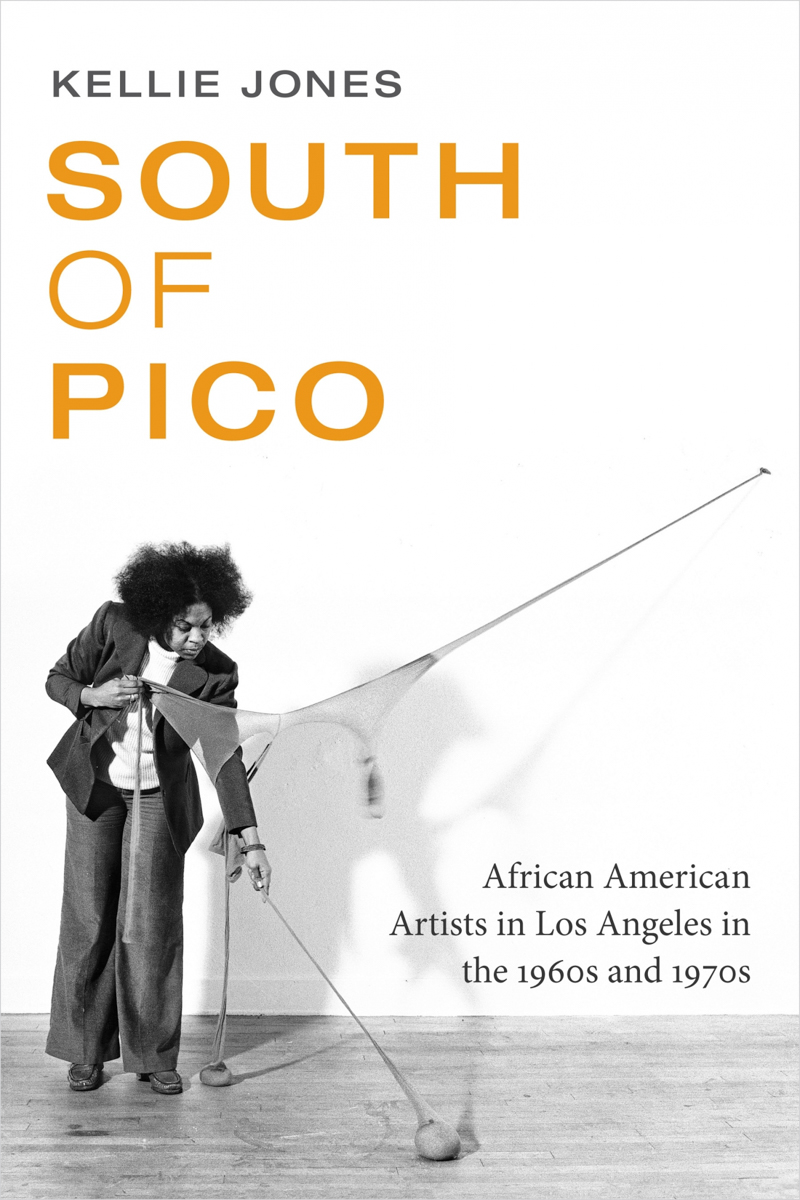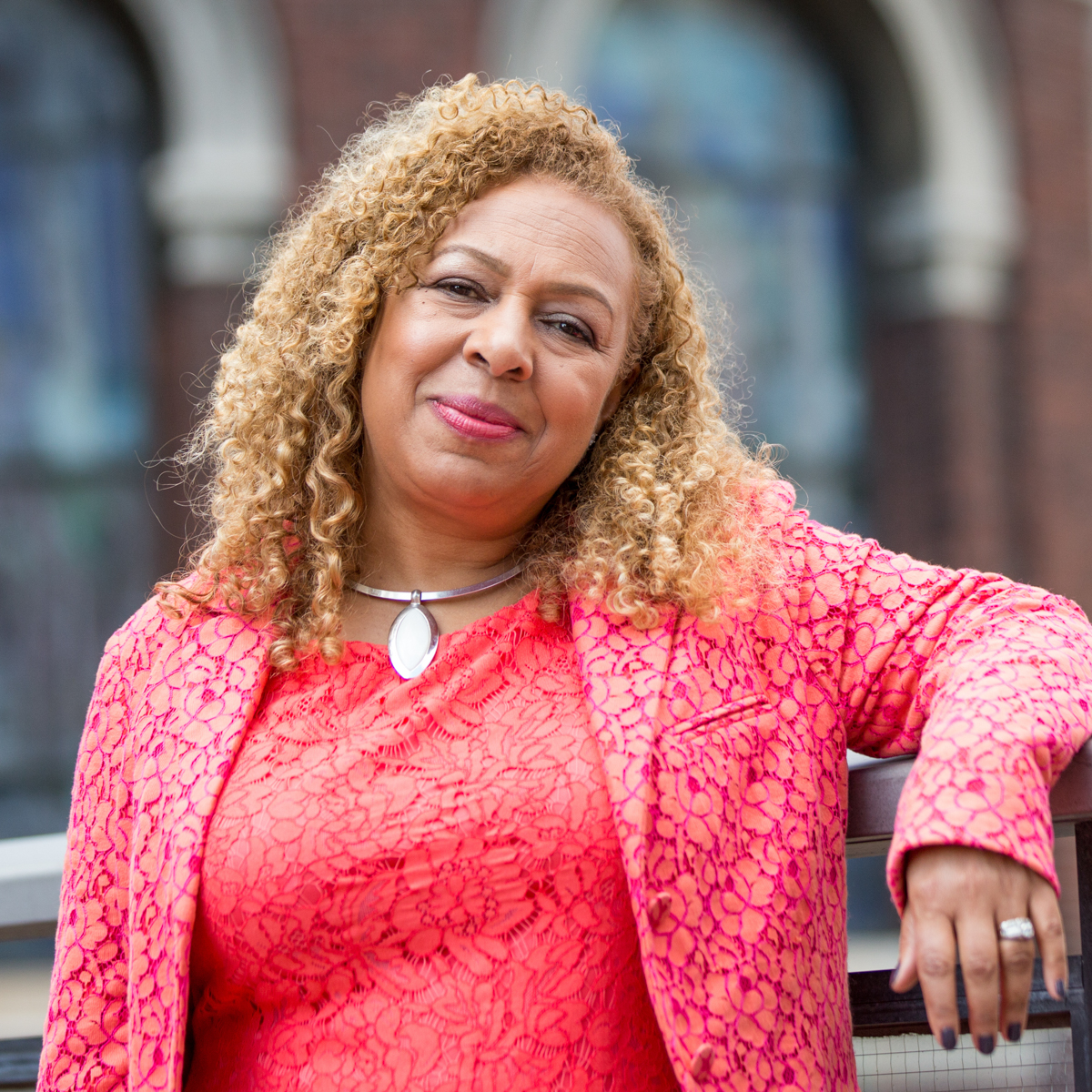South of Pico: African American Artists in Los Angeles in the 1960s and 1970s (2017, Duke University Press).
The California African American Museum (CAAM) and Art + Practice (A+P) are pleased to host esteemed author, curator, and Associate Professor in Art History and Archaeology and African American Studies at Columbia University Dr. Kellie Jones, who will discuss and sign her new book South of Pico: African American Artists in Los Angeles in the 1960s and 1970s in conversation with CAAM Deputy Director, Exhibitions and Programs, Naima J. Keith.
In South of Pico Kellie Jones explores how artists during the 1960s and 1970s in Los Angeles’ black communities created a vibrant, productive, and engaged activist arts scene in the face of structural racism. Emphasizing the importance of African American migration, as well as Los Angeles’ housing and employment politics, Jones shows how the work of black Angeleno artists such as Betye Saar, Charles White, Noah Purifoy, and Senga Nengudi spoke to the dislocation of migration, Los Angeles’ urban renewal, and restrictions on black mobility. Jones characterizes their works as modern migration narratives that look to the past to consider real and imagined futures. She also attends to these artists’ relationships with gallery and museum culture as well as the establishment of black-owned arts spaces. With South of Pico, Jones expands the understanding of the histories of black arts and creativity in Los Angeles and beyond.
South of Pico will be available for purchase at the event thanks to Eso Won Books.
PRAISE FOR SOUTH OF PICO:
“[A] deeply researched, panoramic depiction of how black artists made not only great art, but their own art world in Los Angeles during two crucial decades…. Quite simply, the history, not just of art in Los Angeles, but of modern American art generally will have to be reconceived on the basis of South of Pico and Now Dig This!.”— Barry Schwabsky, Hyperallergic
“A gifted and original scholar, Kellie Jones offers unique and stimulating insights into the role L.A.’s close-knit African American artists and communities played in creating art spaces in museums, cultural centers, and storefronts. South of Pico is broad in scope, tracing the narratives of oft-neglected artists, exploring the contributions of women artists and feminist visual theory, and highlighting the history of collecting by Hollywood movie stars and entertainers. Wonderfully innovative and extraordinarily researched, South of Pico is a foundational study for western American art.” — Deborah Willis, author of Posing Beauty: African American Images from the 1890s to the Present
“Born of decades of research as well as her award-winning exhibition Now Dig This! Art and Black Los Angeles, 1960–1980, this brilliant book by Kellie Jones narrates the rise of this African American art world. Examining the migration of black visual artists to Los Angeles, she discloses the geography of the artistic invention against the backdrop of the civil rights movement, Black Power and arts activism, and violent unrest. With this volume, Professor Jones has authored a nuanced and essential history of African American art in the West.” — Henry Louis Gates Jr.

Speakers

Dr. Kellie Jones is an art historian and curator deepening our understanding of contemporary art of the African Diaspora and securing its place in the canons of modern and contemporary art. Her research and curatorial practice, which span large-scale museum exhibitions with extensive catalogues as well as scholarly books and articles, have been instrumental in introducing the work of now seminal black artists (such as Martin Puryear, David Hammons, and Lorna Simpson) to wide audiences and bringing to light long-forgotten or overlooked black artists.
Through the exhibition Energy/Experimentation: Black Artists and Abstraction, 1964–1980 (2006)—which highlighted numerous black artists working in abstract painting or sculpture—and her scholarly work on African American conceptualists, Jones has prompted a reevaluation of the view that African American art of the period was predominantly figurative or representational. At the same time, she refuses to treat the work of black artists as an isolated phenomenon, instead of drawing on keen attention to cross-cultural aesthetics and a highly developed sensitivity to the formal properties of art objects to integrate their work into the broader artistic production of the United States in the twentieth and twenty-first centuries. In Now Dig This! Art and Black Los Angeles, 1960–1980, she both unearthed the histories of previously unknown Los Angeles–based black artists and contextualized their work alongside West Coast artists of other racial and ethnic backgrounds.
Jones’s exploration of interracial differences and racial solidarity among the artists in Now Dig This! reflects her ongoing interest in the ability of art to shape and advance communities, a theme she returned to in Witness: Art and Civil Rights in the Sixties (2014). With over 100 works by a diverse set of artists, Witness revealed distinct aesthetic strategies informed by but also responding to the struggle for racial justice, while also making a powerful case for the role of art in the civil rights movement. Through an array of critical interventions, Jones is writing the history of African American art and redefining the contours of American art history in general.
Kellie Jones received a B.A. (1981) from Amherst College and a Ph.D. (1999) from Yale University. She held curatorial positions at the Studio Museum in Harlem (1981–1983), Jamaica Arts Center (1986–1990), and Walker Art Center (1991–1998); was U.S. Commissioner for the Bienal de São Paulo (1989), and was a curator of the Johannesburg Biennale (1997). She was on the faculty of Yale University (1999–2006) prior to joining the faculty of Columbia University, where she is currently an associate professor in the Department of Art History and Archaeology and a Faculty Fellow in the Institute for Research in African American Studies. In addition to her books, EyeMinded: Living and Writing Contemporary Art (2011) and South of Pico: African American Artists in Los Angeles in the 1960s and 1970s (2017), Jones has authored essays in such journals as Artforum and Third Text and numerous exhibition catalogs.

Naima J. Keith joined the California African American Museum (CAAM) in 2016 to guide the curatorial and education departments as well as marketing and communications. During her tenure at CAAM, Keith has also curated Hank Willis Thomas: Black Righteous Space (2016), Genevieve Gaignard: Smell the Roses (2016), and Kenyatta Hinkle: The Evanesced (2017). She is the 2017 recipient of the David C. Driskell Prize in recognition of her contributions to the field of African American art history.
Previously an associate curator at the Studio Museum in Harlem (2011–16), her notable exhibitions include Rodney McMillian: Views of Main Street (2016), Artists in Residence 2014–2015 (2015), Samuel Levi Jones: Unbound (2015), Titus Kaphar (2014), Glenn Kaino (2014), and Robert Pruitt (2013), The Shadows Took Shape (co-curated with Zoe Whitley, 2013), Fore (co-curated with Lauren Haynes and Thomas J. Lax, 2012). Her historical survey, Charles Gaines: Gridwork 1974–1989 (2014), traveled to the Hammer Museum in Los Angeles, CA Spring 2015 and was nominated in 2014 for a “Best Monographic Museum Show in New York” award by the International Association of Art Critics (AICA-USA). Between 2008–11, Keith worked as a curatorial fellow at the Hammer Museum in Los Angeles, serving as the primary contact for the groundbreaking exhibition Now Dig This! Art and Black Los Angeles 1960–1980, organized by guest curator Kellie Jones. She has lectured at the Zoma Contemporary Art Center, Columbia University, The Museum of Modern Art (MoMA), the Los Angeles County Museum of Art (LACMA), University of Southern California (USC), Museum of Contemporary Art Denver, and the Brooklyn Museum. Her essays have been featured in publications for The Studio Museum in Harlem, Hammer Museum, Perez Art Museum Miami, LAXART, MoMA PS1, and NKA: Journal of Contemporary African Art. Keith holds degrees from Spelman College and UCLA and is a proud native of Los Angeles.